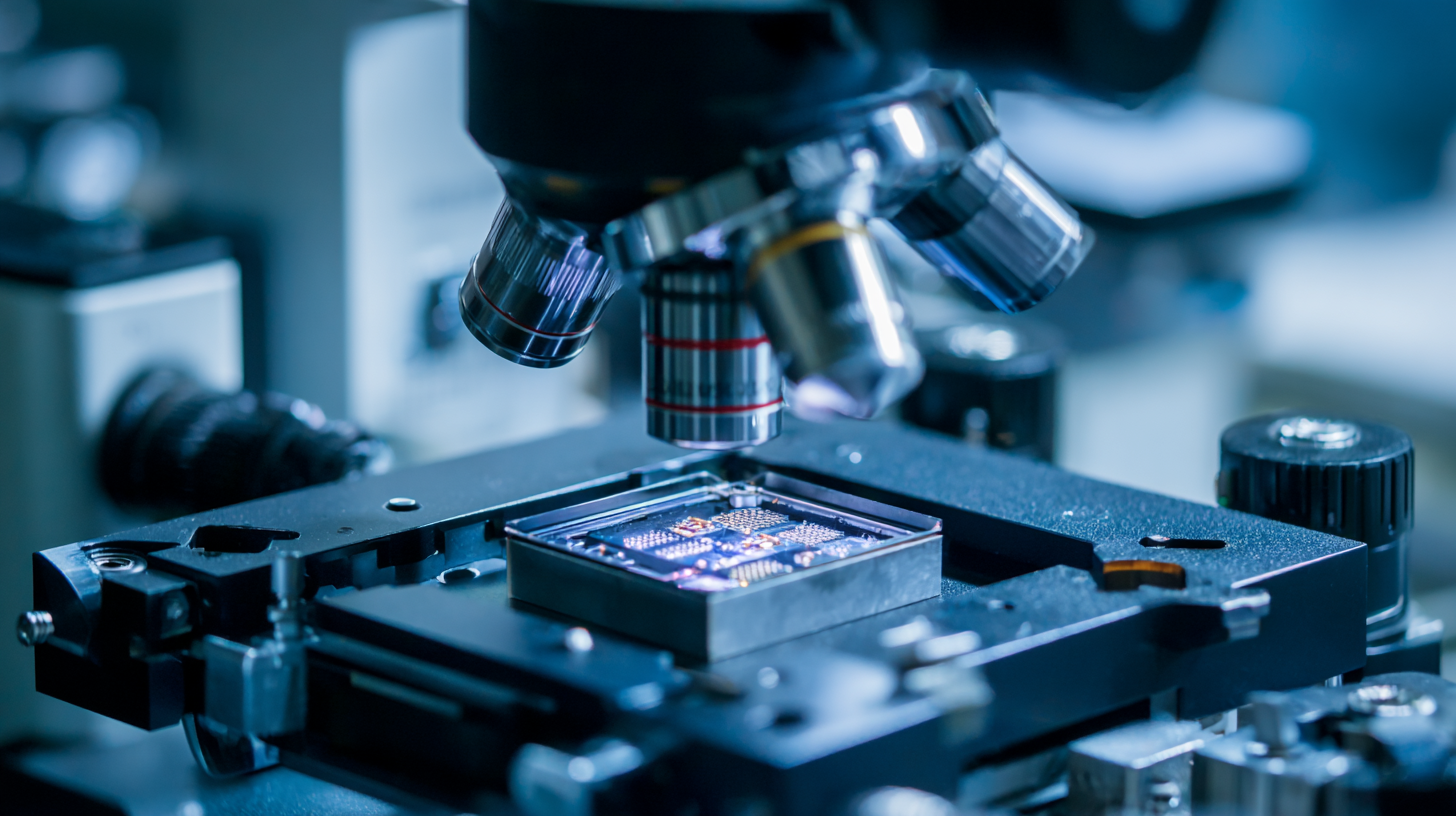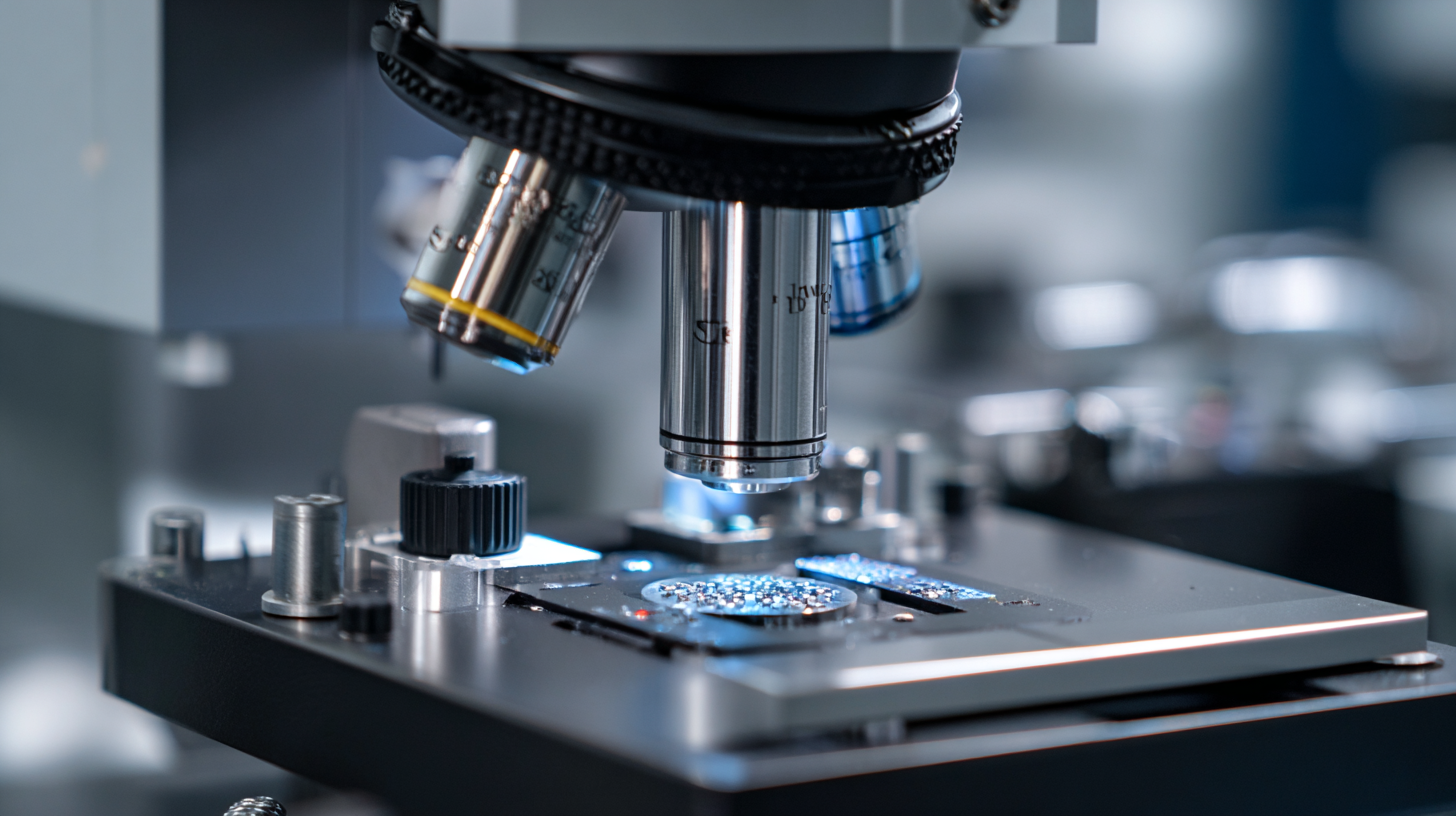- Home Page
- Company Profile
-
Our Products
- Microscope
- CONFOCAL MICROSCOPES
- Trinocular Upright Metallurgical Microscope
- Portable Grooved Metallurgical Microscope
- Cell Culture Imaging System
- Metallurgical Microscope
- Projection Microscope
- Student Stereo Microscope
- BINOCULAR STEREO ZOOM MICROSCOPE
- PCB Inspection Video Stereoscope Microscope
- SPINNERET MICROSCOPE
- Penta Head Microscope/ Multi view Head Microscope
- Research Polarising Microscope
- Senior Dissecting Microscope
- Dissecting Microscope
- Motorized Comparision Microscope
- Sieves Digital Microscopes
- Advance Inverted Tissue Culture Microscope
- Advance Stereo Zoom Microscope
- Student Projection Microscope
- Inverted Metallurgical Microscope
- Measuring Microscope
- Digital Spinneret Inspection Microscope
- Portable Inverted Tissue Culture Microscope
- Binocular Inverted Tissue Culture Microscope
- Student Compound Microscope
- Trinocular Stereozoom Microscope
- Advanced Research Microscope
- Gemological Microscope
- Polarizing Projection Microscope
- Senior Inspection Spinneretscope
- Confocal Microscope
- Senior Projection Microscope
- Toolmaker's Microscope
- Research Microscope
- Stereo Inspection Microscope
- Student Medical Microscope
- Digital Biological Microscope RXLr-4D
- Toolmaker Microscope Large
- Stereo Inspection Scope
- Trinocular Research Microscope
- Portable Metallurgical Microscope
- Binocular Research Microscope
- Student School Microscope
- Inverted Tissue Culture Microscope
- Projection Microscope
- Laboratory Microscope
- Decca Head Microscope
- Advanced Research Material Microscope
- Microtomes
- Semi Automatic Rotary Microtome
- Senior Precision Rotary Microtome
- Rocking Microtome
- Rotary Microtome Erma Type
- Freezing Microtome
- Fully Automatic Rotary Microtome
- Manual Rotary Microtome RMT-25
- Advance Rotary Microtome
- Hand Table Microtome
- Knife Sharpener Microtome
- Sliding Miocrotome
- Slide Staining Machine
- Rotary Microtome
- CRYOSTAT MICROTOME
- Optical Instruments
- Tissue Processor Machine
- Microscope Accessories
- Histopathological Equipment
- Lab Instrument
- Radical Digital Turbidity Meter
- Radical Microprocessor Dissolved Oxygen Meter
- Digital Photo Colorimeter
- Tap Density Tester
- Serological Water Bath
- Magnetic Stirrer
- Dual Channel Flame Photometer
- pH or mv or Conductivity
- Round Centrifuge
- Radical Disintegration Test Apparatus
- Digital Slide Scanner
- Precision Water Bath
- Incubator Shaker Water Bath
- Hemoglobin meter
- Microprocessor Colony Counter
- PASS BOX DYNAMIC
- Radical Microprocessor Colony Counter
- Bulk Density Apparatus
- Laboratory Rectangular Hot Plates
- Tablet Dissolution Test Apparatus
- Hemoglobin Meter (Sahli's)
- Micro Centrifuge 16000 R.P.M.
- Revolutionary General Purpose Digital Centrifuge
- Vortex Shaker
- Rectangular Water Bath
- Heating Mantel
- Digital Spectrophotometer
- Haematocrit Centrifuge
- Water Distillation with Metal Heater
- Hand Specimen Leveler Press
- GROSSING TABLE
- COOLING PLATE
- MICROPROCESSOR PH METER
- DIGITAL FLAME PHOTOMETER
- pH/mV/TEMPERATURE TESTER
- DIGITAL PH, CONDUCTIVITY & TEMPERATURE METER
- Radical Auto Karl Fischer Titrimeter
- Stereo Zoom Microscope
- Jewellery Making Microscope
- Binocular Stereo Microscope
- Advanced Stereo Zoom Microscope
- Articulated Trinocular Stereo Zoom Microscope
- Digital 3D Inspection Microscope
- Binocular Stereo Microscopes
- Motorized Stereo Microscopes
- Trinocular Microscope
- Stereo Inspection Microscope
- Stereo Microscope
- Digital 3D Inspection Microscope RSZ-3D
- Stereo Zoom Microscope RSM-8
- Polarising Microscopes
- Lab Consumables
- Profile Projector
- Optical Profile Projector
- Vertical Profile Projector
- Profile Projector RPP-500
- Profile Projector
- PROFILE PROJECTOR
- Universal Profile Projector
- Bench Type Profile Projector
- Charpy Profile Projector
- High Sharpness Profile Projector
- Profile Projector
- Horizontal Profile Projector
- Digital Profile Projector
- Radical Profile Projector
- Coaxial Profile Projector
- Anotomy Model
- Metallurgical Microscope
- Microscope
- Contact Us

Ultimate Microtome Machine Selection Checklist for Optimal Performance
In the rapidly evolving landscape of the histopathology sector, the Microtome Machine has emerged as an indispensable tool for achieving precise tissue sectioning. According to a recent market analysis report by ResearchAndMarkets, the global microtome market is projected to reach USD 300 million by 2025, driven predominantly by advancements in diagnostic technologies and the increasing prevalence of chronic diseases. This growth trajectory underscores the critical importance of selecting the optimal microtome machine, as performance directly influences the accuracy of histological samples. With a plethora of options available, ensuring that you choose the right machinery is essential for maintaining high standards in laboratory practices. This blog will provide a comprehensive checklist, guiding you through the selection process and helping you maximize the performance of your microtome machine for enhanced outcomes in biomedical research and diagnostics.

Table of Contents
[Hide]
Essential Features to Consider in Microtome Machine Selection
When selecting a microtome machine, several essential features must be considered to ensure optimal performance. One of the most critical aspects is the cutting accuracy. A microtome should provide consistent, precise cuts that are necessary for high-quality specimen preparation. Look for machines with advanced blade settings, as well as fine control mechanisms that allow users to adjust thickness with ease. A microtome with a robust design that minimizes vibrations during operation can also enhance cutting precision, leading to better results in histological applications.
Another important feature to evaluate is the machine's ease of use and maintenance. User-friendly interfaces and clear instructions can significantly enhance the workflow, especially in busy laboratories. Additionally, consider models that offer easy access for blade changes and cleaning, as this will save time and improve efficiency. Durability is paramount; investing in a microtome made from high-quality materials can ensure long-lasting performance, reducing the need for frequent repairs or replacements. Finally, pay attention to the available accessories and support from the manufacturer, as these can greatly influence your experience and success with the machine.

Understanding the Different Types of Microtomes and Their Uses
Microtomes are essential tools in histology and pathology, allowing for precise slicing of specimen materials for microscopic analysis. Understanding the different types of microtomes is crucial for selecting the right one for your specific needs. The most common types include rotary microtomes, cryostats, and sliding microtomes. Each type serves a unique purpose and is optimized for different materials and applications.
Rotary microtomes are widely used in routine histology labs. They offer high precision and are suitable for both paraffin-embedded and frozen sections. This versatility makes them ideal for a variety of specimens, from soft tissues to hard tissues like bones. On the other hand, cryostats are specifically designed for cutting frozen samples. They are invaluable in situations where rapid diagnosis is necessary, such as intraoperative consultations. Lastly, sliding microtomes are perfect for larger specimens and are often employed in botanical studies. Understanding these distinctions will guide users in making informed decisions to achieve optimal performance in their histological applications.
Ultimate Microtome Machine Selection Checklist for Optimal Performance
| Microtome Type | Best Use Case | Section Thickness (µm) | Ease of Use | Cost Range ($) |
|---|---|---|---|---|
| Rotary Microtome | General histology | 1-100 | Moderate | 500 - 5000 |
| Cryostat | Frozen sections | 5-50 | High | 7000 - 15000 |
| Sliding Microtome | Material testing, larger samples | 10-100 | Moderate | 2000 - 8000 |
| Ultramicrotome | Electron microscopy | 50-100 | Low | 15000 - 30000 |
| Microtome for Plant Samples | Plant histology | 5-30 | Moderate | 1000 - 4000 |
Key Industry Standards for Microtome Machine Quality and Performance
When selecting a microtome machine, understanding the key industry standards for quality and performance is critical. The accuracy and precision of a microtome not only influence the quality of prepared samples but also impact downstream processes in histopathology and research. According to the International Society for Advancement of Cytometry (ISAC), machines that meet ISO 9001 and ISO 13485 standards demonstrate consistent performance and reliability, ensuring that laboratories can produce reproducible and high-quality results.
Additionally, a report by Frost & Sullivan highlights that microtome machines equipped with advanced features such as automated sectioning and real-time monitoring significantly enhance operational efficiency. These machines can achieve section thickness tolerances within ±5 microns, a crucial parameter for achieving high-quality tissue samples. Furthermore, energy consumption and ergonomics are important considerations. A microtome machine that adheres to safety standards, such as IEC 61010, can operate safely under various laboratory conditions, providing a balance between performance and user safety, which is increasingly recognized in contemporary research environments.
Microtome Machine Performance Comparison
Maintenance and Care Tips for Prolonging Microtome Lifespan
Proper maintenance and care for your microtome is crucial for ensuring its longevity and optimal performance. According to a study published by the
Journal of Histotechnology, equipment that undergoes regular maintenance can extend its lifespan by
up to 40%. Regularly scheduled cleanings, proper lubrication, and timely replacement of worn-out parts are among the practices that contribute to this significant improvement.
In addition, utilizing high-quality blades and ensuring that the microtome is kept in a stable environment—away from humidity and temperature fluctuations—helps prevent damage to the apparatus.
Furthermore, implementing a routine inspection schedule allows for the early detection of potential issues before they escalate. The
National Institute of Standards and Technology reported that a good maintenance regime could reduce unexpected downtime by
30%. Ensuring your microtome is correctly calibrated and frequently checked for alignment can enhance precision in sectioning, which is essential for high-quality histological work.
By dedicating time to both routine maintenance and understanding your microtome’s specific requirements, you can significantly increase its operational efficiency and reliability.
Evaluating Cost vs. Performance: Making the Right Investment in Microtomes
When it comes to selecting a microtome for your laboratory, one of the most critical considerations is the balance between cost and performance. A high-end microtome may offer advanced features and unparalleled precision, but it can also come with a hefty price tag. Conversely, opting for a budget-friendly model may save money upfront, but could compromise the quality of your results and lead to increased maintenance costs over time. Consequently, it's essential to evaluate how a given microtome aligns with your specific operational needs and budget constraints.

To make the right investment, start by assessing your lab's requirements. Consider factors such as the types of specimens you will be slicing, the volume of samples processed daily, and the level of precision needed in your work. From there, you can create a checklist that includes essential features that match your performance expectations, such as slicing speed, blade quality, and user-friendliness. This approach ensures you're investing not only in a machine that fits your budget but also in one that enhances your workflow and the quality of your outputs, thereby maximizing your return on investment in the long run.
Contact Us
- 9th Milestome, Ambala-Jagadhri Road, P.O.- Khudda Kalan, NH-444A,Ambala Cantt - 133104, Haryana, India
- Phone : 08045479132
- Mrs POONAM BHANDARI (Incharge - Mktg & Sales )
- Mobile : 08045479132
- Send Inquiry
GST : 06AACCR8985N1ZI
Our Products
RADICAL SCIENTIFIC EQUIPMENTS PVT. LTD.
All Rights Reserved.(Terms of Use)
Developed and Managed by Infocom Network Private Limited.
Developed and Managed by Infocom Network Private Limited.



